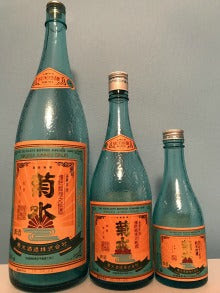Sake Experiment – Does the size of the bottle affect the flavor of the sake?
Do you know what is better than drinking sake? No, not drinking more sake! The coolest thing about sake is thinking about sake. Seriously, I mean that. In one sense I continually try to get my mind around the fact how rice and water can do and be, and taste like so many things. Crazy! How can rice and water taste like honeydew watermelon? How can rice and water ferment up to 19% and beyond (for you Senior Harper)? How can rice and water pair perfectly with artichokes, when no wine can? I love to think about sake!

So for years this thinking about sake has led to many experiments with sake. As retailer of this amazing beverage I wanted to know everything about sake so that I could store it better, handle it better, keep it better, and of course sell it better. I have conducted many experiments that many brewers have thanked me for, and I have done experiments where certain know it alls in the industry have scolded me for not saying that you must do this and do that for perfect sake, when I actually proved otherwise. By all means take a gander in the archives for many of these experiments.
One such experiment has been a difficult one for me to make a full determination on, because of batch availability. It’s the conversation about do different sized bottles of sake drink differently with the same sake. Or do they all drink the same? We have no problem getting three different sized bottles (300ml, 720ml, and 1.8l) of specific sakes, but what we do not have control over is if they all came from the same batch of sake. Sometimes the dates are wrong and do not match, so does this mean apples and oranges? And usually the sakes that come in three sizes do not all come from the same tank as these more “produced” sakes are made in tanks that get blended to a certain degree, and cannot be traced back to the exact tank.
In the wine world there is much discussion about how magnums drink differently as the bigger bottles have bigger corks that are more permeable to air and oxidize at different rates. Some say the bigger bottles drink better on this account and others say the opposite. Is this issue relevant with sake? No, as sakes are pasteurized with twist caps to keep out the ever destructive air. (Or they use stopper or plug caps) So, what would make the sakes drink differently in different sized bottles?

Within the neck of each sake there is air, or what appears to be air. Let’s say that there is no liquid in this part of the bottle and the air could actually not be air as some producers rid this area of actual air. (Yes, some producers will insert a gas that kills air so that there is no oxygen in the neck of the bottle) This area of “air” or not “air” is different in each sized bottle, with the largest surface area coming in the 1.8L bottle. If there is in fact “air” in the neck of a larger bottle it represents more oxidation within the bottle. There is more to work with on the exact same fluid. And to a degree this would degrade the sake at a faster pace. And this is especially true when a bottle is actually opened and real air and oxygen do their thing quicker.
So does this influence the flavor of the same sake in different sized bottles? I have only done one perfect example using three samples of differing sizes from the same batch of sake. And I had to get these directly from a brewery. And I hand carried them back to SF and kept them for 1 year. (I stored them in my basement and not in a fridge) The result was that we could not taste a dramatic difference. Damn! How scientific was that? Ha! Not really, but it was to “think” about sake in this capacity.
So the next time that you see an offering of two or three sizes of sake bottles then do you own test! I “think” in general that you will not taste a considerable difference, but the thinking and drinking will be fun nevertheless.
